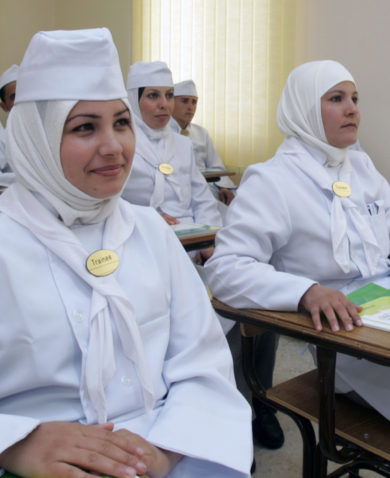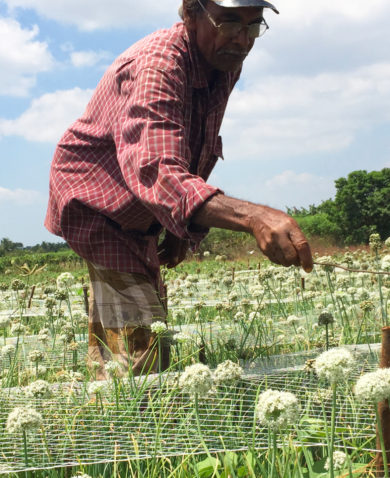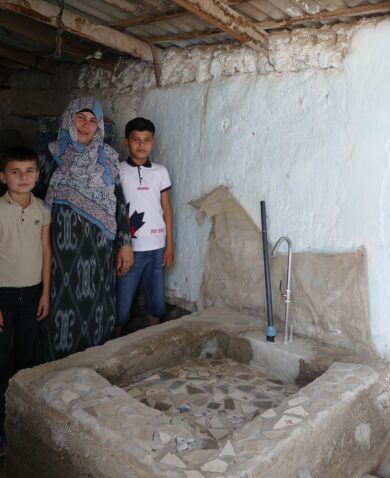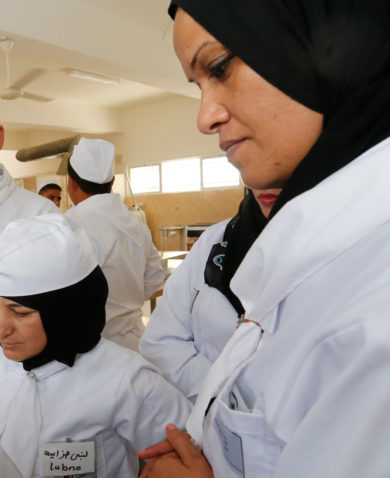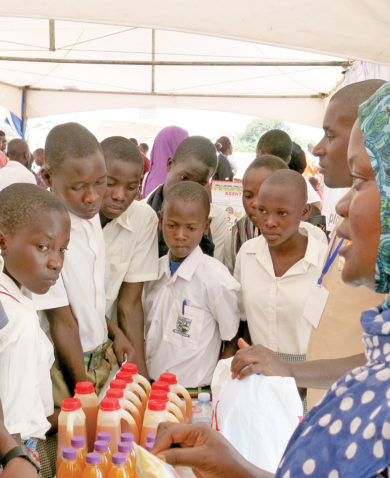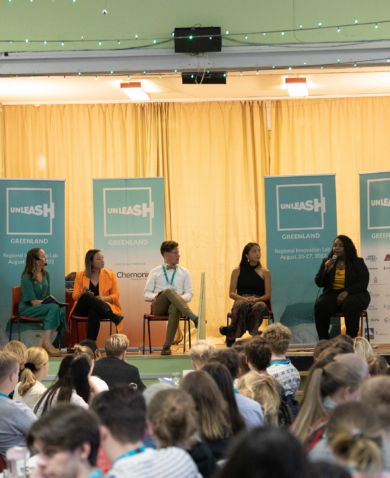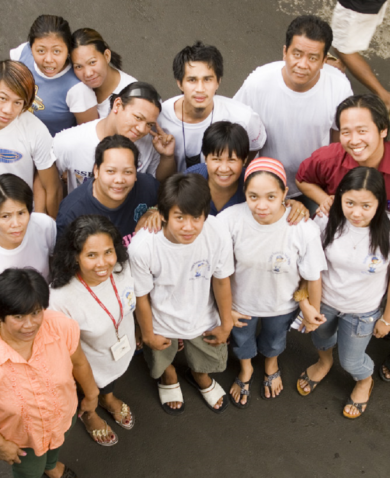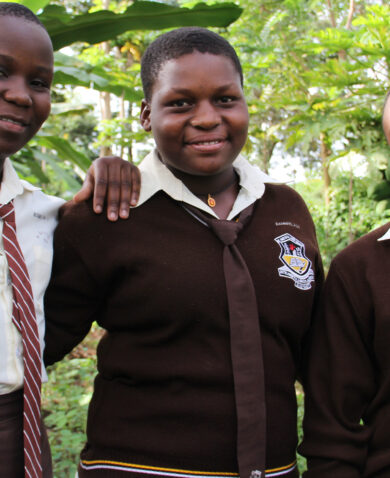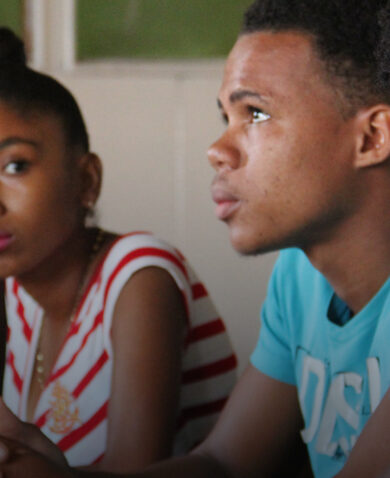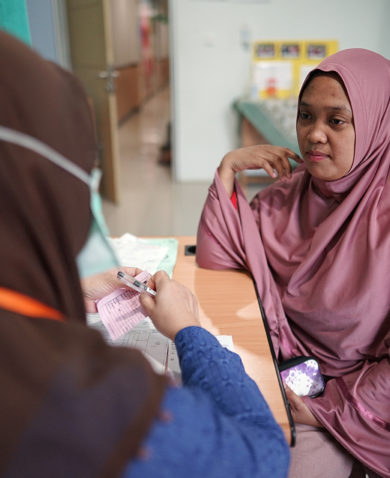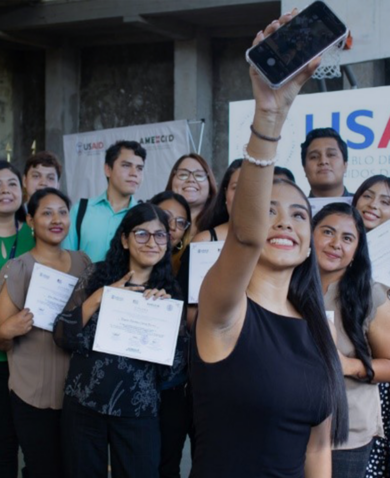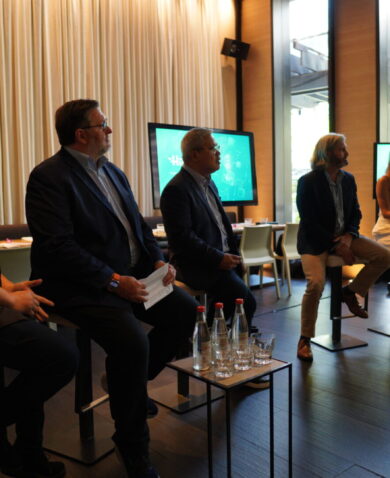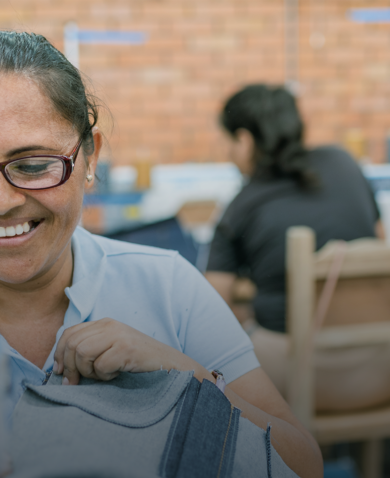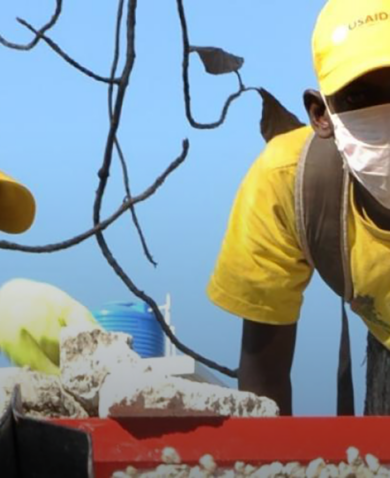
3 Lessons for Empowering Youth to Drive Sustainable Change Through Innovation
October 14, 2020 | 5 Minute ReadYouth empowerment through social innovation and entrepreneurship has incredible potential to solve problems at a grassroots level if youth are given robust platforms to connect and act.
Join UNLEASH and Chemonics during the closing event of the upcoming Global Youth Economic Opportunities Summit on October 29 at 10:15 a.m. EDT to observe our innovation skills-building session with youth attendees and listen to testimonials about how targeted investment in youth has led to sustainable development outcomes.
Currently, half of the world’s population is under the age of 30, with 90 percent of this age group living in emerging and developing economies and 50 percent unemployed or working and living in poverty. The aspirations and needs of young people, and their ability to meet their full potential, remain largely unmet due to stagnating economic growth and limited opportunities for advancement. Despite the odds being stacked against them, we know that when youth are empowered, development outcomes improve.
Youth are an indispensable yet underutilized force in tackling global poverty and inequality. Their energy, passion, and courage to challenge the status quo are needed to identify and address complex global problems, and their insights are worthy of attention and investment. The global development community should serve as champions and provide stronger ecosystems of support for those insights to materialize into effective development solutions. Through our projects and partnerships, like the UNLEASH Global Innovation Lab that focuses on enabling social entrepreneurship, we at Chemonics put youth in the driver’s seat so they can decide how to improve their own environments. By equipping them with the skills, resources, and networks they need to solve problems in their communities, and ensuring they are empowered to lead the process, we have seen youth support job creation, contribute to economic growth, and much more.
How can funders and partners create more effective pathways to empower youth? Here are three lessons I’ve learned from applying Chemonics’ expertise to the co-creation of UNLEASH’s pre-accelerator program for early stage, youth-driven social impact ventures:
1. Create inclusive opportunities for youth to collaborate and build networks
Social innovation is a compelling and unifying banner for youth to rally around, but opportunities that support engagement across sectors in this space are limited. Diverse perspectives are critical for understanding the nuance and complexity of social problems, and inclusive teams produce innovative ideas because they unlock novel understanding that is otherwise hidden when some perspectives are absent or muted. Chemonics knows that inclusivity means creating opportunities to engage with representation from all backgrounds, elevating the voices of those who live with the problem, and intentionally integrating those perspectives into problem-framing and ideation activities.
Chemonics’ experience designing youth activities around this culture of inclusion has yielded exciting results. On the USAID Human Rights Activity in Colombia, for example, Chemonics has supported the development of youth human rights promoter networks that connected and empowered youth across several conflict-affected municipalities to access leadership, advocacy, and conflict resolution training. Through our partnership with UNLEASH, we have also observed the positive outcomes of creating inclusive opportunities on a larger scale. The cohorts of 1,000 young professionals and students who participate in UNLEASH’s innovation lab each year come from more than 160 countries and all socioeconomic backgrounds, identities, and professions. Program scholarships support many participants, enabling equal access, while others are engaged from private industries that do not typically collaborate across the public, civil, and academic sectors. This allows youth to recognize their blind spots or knowledge gaps and overcome them as they work together during the lab. The richness in diversity and perspective has led to a growing pipeline of 600 development solutions, in addition to an active network of peers, 90 percent of whom remain engaged in addressing sustainability challenges following their participation in the lab.
2. Equip youth with practical skills and tools to practice innovation
For most youth around the world, education is not easily accessible and, even when secured, does not guarantee access to quality employment opportunities. Critical thinking and problem-framing skills are indispensable for workforce readiness because they enable youth to reimagine challenges as opportunities in day-to-day life. An effective way to approach problem-framing is through human-centered design, which uses empathy to deconstruct problems. By using design thinking to understand problems from the perspective of the individual or community facing a challenge, youth have a better chance of identifying unique solutions that will meet those needs — including their own. From our experience with UNLEASH, increasing the availability of innovation events and training where youth can access and gain experience with human-centered design tools will help mobilize them to address development and sustainability challenges, and encourage social entrepreneurship as a viable form of self-employment.
The UNLEASH platform was designed for exactly this purpose, and we know that it is effective. The innovation and scaling tools and curriculum are tailored to a global youth audience, and the model relies on community engagement to further expand its programs globally. Of the 3,000 participants surveyed since UNLEASH launched in 2017, 98 percent would recommend UNLEASH programs to their peers, with many describing the experience as life changing. As a result, UNLEASH received 18,000 applications for 1,000 spots at the annual lab in 2019. To get innovation tools into the hands of more young leaders, UNLEASH launched a scalable model of its eight-day annual lab with two-day local innovation hackathons this year. UNLEASH alumni volunteers organize and run these events, with the goal of placing youth in charge of knowledge sharing and community development. The momentum of the UNLEASH community powerfully demonstrates that youth are hungry for the right opportunities, practical tools, and supportive environments to succeed.
3. Develop supportive programs that target early stage ventures
For youth to translate unmet needs in their communities into viable and sustainable income generating opportunities for themselves and others, they need targeted support. In addition to practical tools that allow them to identify and understand problems well to identify the right market opportunities, they also need relevant business frameworks, mentorship, expert insight, funding, partners, and more.
In 2019, Chemonics co-created the UNLEASH+ pre-accelerator program to close the gap between the great ideas generated at innovation events and the high implementation hurdles facing youth entrepreneurs. The program’s curriculum for early stage ventures still in the testing phase includes a combination of activities that support individual and team development, solution validation, business plan and pitch development, partner networking, peer-to-peer learning, and financial grants to winning teams. By applying a structured business rigor early on, the program strives to ensure these youth ventures develop viable business models and are competitively positioned to work with partners and enter formal accelerator programs.
UNLEASH+ builds on Chemonics’ institutional knowledge of working with youth to bring new products and services to market. On projects like the Uganda Feed the Future Commodity Production and Marketing (CPM) activity, we learned that ongoing and intensive mentorship of youth teams is critical to success. CPM project leadership coached 10 youth over the course of four years in the development of a digital platform EzyAgric that decreased smallholder farmers’ marginal cost of production and increased access to finance. The concept originated from a CPM youth event in 2015 and led to 35 percent of its shares being sold to two leading companies that will enable the venture to spread to other African countries, with the aim of reaching 60 million farmers in 2030. All of this success grew from the ingenuity and passion of young people who cared about their communities.
Youth empowerment through social innovation and entrepreneurship has incredible potential to solve problems at a grassroots level if youth are given robust platforms to connect and act. More than 200 youth teams so far have applied to 75 slots in the follow-on UNLEASH+ program since its launch last year. Youth need more partners, platforms, and ecosystems that will provide comprehensive support to early stage ventures to help them make the leap from ideation to scale.
Posts on the blog represent the views of the authors and do not necessarily represent the views of Chemonics.














